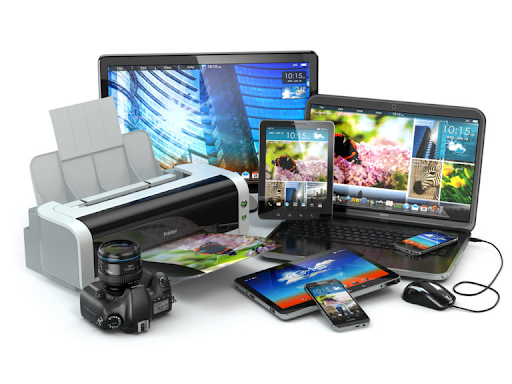You may have a junk drawer or two in your home filled with old wires or gadgets. This isn’t uncommon among households, as all tech products are bound to become unused one day.
In recent decades, more families have been experiencing an increase in these old household technologies, known as e-waste, or electronic waste. E-waste refers to used electronics that are discarded, donated, or given away, including old phones and computers, plugs, mouses, DVD players, printers, cords and other electronics. As new technology emerges, old devices need to be replaced at almost the same rapid rate.
Data from the United Nations reveals that out of the 53.6 million metric tons of the world’s e-waste in 2019, just over 17% was properly recycled. When people dispose of their e-waste, the easy option is to toss it away in the trash, which has adverse effects. When broken or unused electronics end up in landfills, toxic substances like lead and mercury can seep into the soil and water.
But there are other ways to dispose of e-waste that are more effective and environmentally friendly. For junior Hannah Magino, she switches out her phone every three or four years and replaces her laptop every few years for the cyber activities she’s involved in.
Whenever I have an old device, I usually either give it away or donate it to a company that will take it and gives it to someone if it’s not damaged or it’s still relatively new. Sometimes, I will give it to a company that recycles electronics and makes use of the usable parts,
— junior Hannah Magino
Junior Jason Termini disposes of e-waste around every two months. “For cords and keyboards, I usually give them away to a friend. If something’s really broken, I might just put it in the trash. But for batteries, I’ll take those to proper recycling places like Mom’s,” Termini said.
Taking electronics to an e-waste recycling facility, finding opportunities for reuse or bringing them to places that can repair certain parts are proper e-waste disposal methods.
“Our biggest e-waste at school is Double A batteries. I take all of them and give it to the school and the building manager disposes of them properly,” Technology teacher Kevin Daney said.
The county offers sites for people to drop off e-waste. “For many electronics, you can get a lot of materials out of them. If you give your e-waste to the [Montgomery County Shady Grove Transfer Station and Recycling Center], the county actually could get some money off of it from selling it to a recycling company, who can refurbish and resell it in developing countries,” Daney said.
Magino feels that there should be more efforts to raise awareness about the importance of disposing of e-waste properly.
“In schools, or even on social media, there should be more infographics that tell you of the effects that your e-waste can have on the environment and provide resources of companies or organizations that can help you dispose of the e-waste,” Magino said.



































